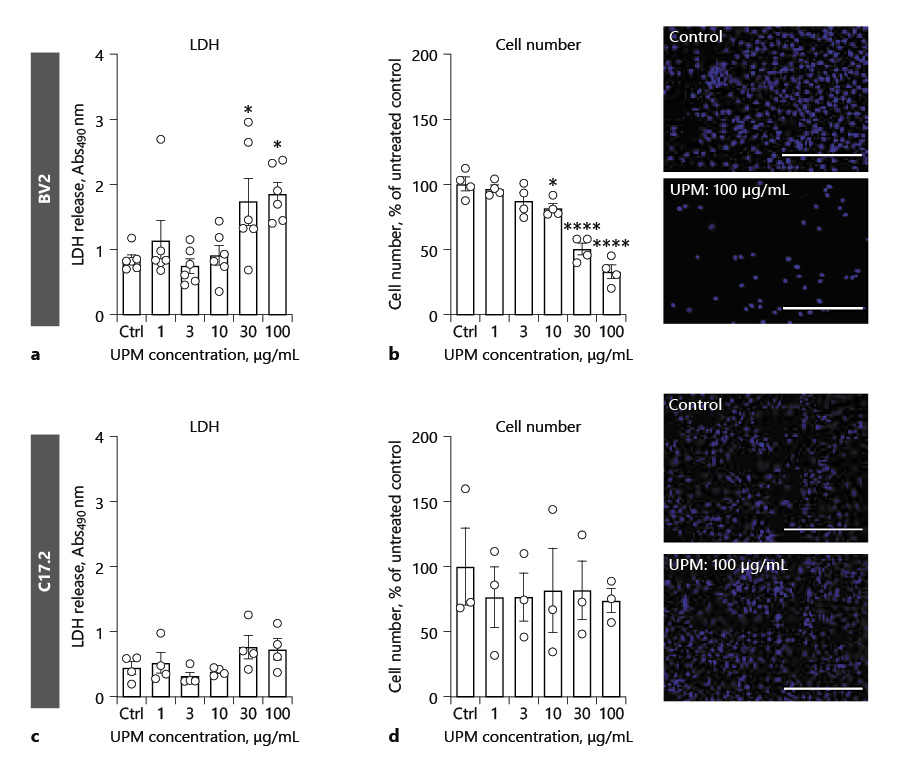


Exposure to particulate matter (PM) contained within air pollution is associated with cardiovascular, respiratory, and neurological ill health. There is increasing evidence that exposure to air pollution in utero and in early childhood is associated with altered brain development. However, the underlying mechanisms for impaired brain development are not clear.
While oxidative stress and neuroinflammation are documented consequences of PM exposure, cell-specific mechanisms that may be triggered in response to air pollution exposure are less well defined. Here, we assess the effect of urban PM exposure on two different cell types, microglial-like BV2 cells and neural stem/precursor-like C17.2 cells. We found that, contrary to expectations, immature C17.2 cells were more resistant to PM-mediated oxidative stress and cell death than BV2 cells. PM exposure resulted in decreased mitochondrial health and increased mitochondrial ROS in BV2 cells which could be prevented by MitoTEMPO antioxidant treatment.
Our data suggest that not only is mitochondrial dysfunction a key trigger in PM-mediated cytotoxicity but that such deleterious effects may also depend on cell type and maturity.
Air pollution is a serious common public health concern, increasingly associated with morbidity and mortality and resulting in an estimated 7 million premature deaths per year, 4.2 million of which are directly related to outdoor air [1]. Air pollution comprises gases such as nitrogen dioxide, ozone, sulphur dioxide, and carbon monoxide as well as particulate matter (PM), composed of metals, soil/dust, and organic chemicals derived from traffic-related air pollution, domestic fuel burning, industry, and manufacturing [2]. Over 90% of the population routinely experience levels of PM2.5 (PM comprising particles less than 2.5 µm in size) that are significantly higher than World Health Organization recommendations (5 μg/m3, annually [1]) with low-to-middle income countries such as India and China reporting levels up to ten-fold higher than Europe and the USA [3].
Exposure to air pollution increases the risk of developing cardiovascular and respiratory disease, and the central nervous system is also a proposed target organ [4-7]. Numerous large-scale studies indicate an association between chronic exposure to high levels of PM and neurodegenerative disease such as Alzheimer’s disease [7-10]. Within the last few years, concerns have increased that poor air quality and exposure to air pollution, both during pregnancy and in early life, can impact child health. Epidemiological studies link PM exposure during pregnancy and early childhood with reduced cognition, impaired learning and memory, attentiveness, and communication [11-13]. Early life exposure to PM is also associated with an increased risk of neurodevelopmental disorders such as attention-deficit hyperactivity disorder and autism spectrum disorder (ASD [14-16]).